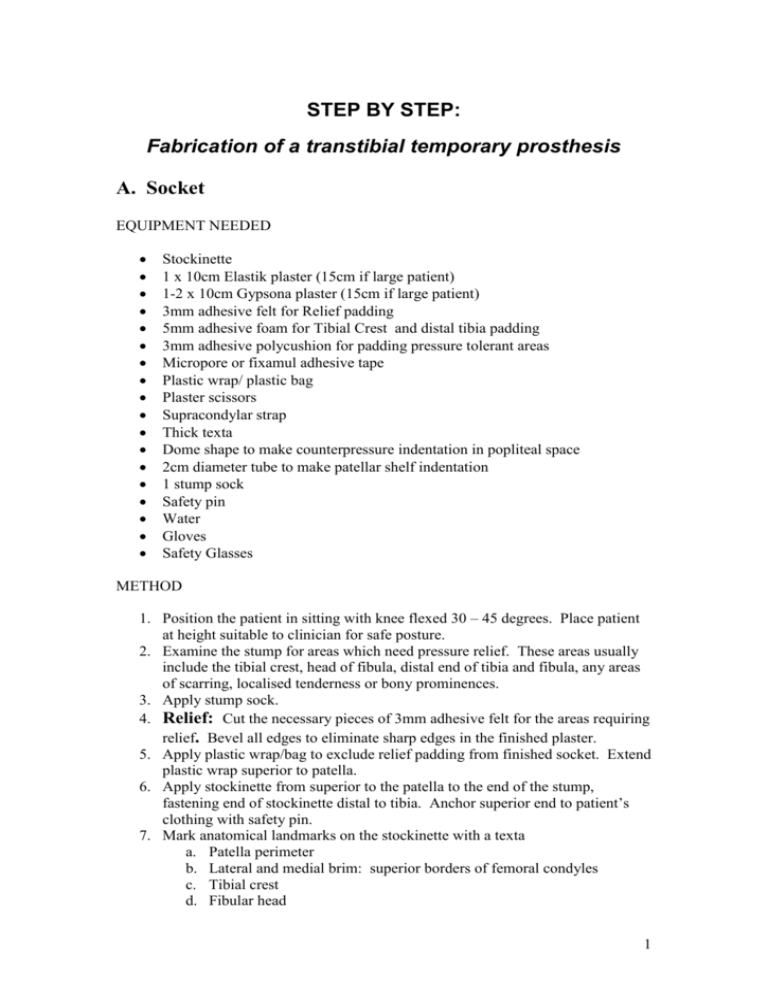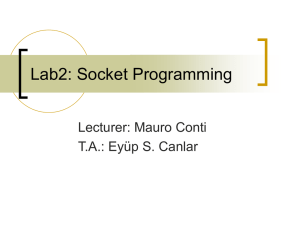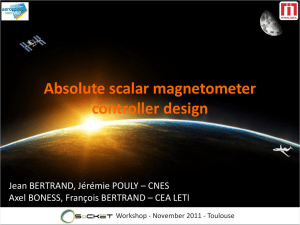STEP BY STEP:
advertisement

STEP BY STEP: Fabrication of a transtibial temporary prosthesis A. Socket EQUIPMENT NEEDED Stockinette 1 x 10cm Elastik plaster (15cm if large patient) 1-2 x 10cm Gypsona plaster (15cm if large patient) 3mm adhesive felt for Relief padding 5mm adhesive foam for Tibial Crest and distal tibia padding 3mm adhesive polycushion for padding pressure tolerant areas Micropore or fixamul adhesive tape Plastic wrap/ plastic bag Plaster scissors Supracondylar strap Thick texta Dome shape to make counterpressure indentation in popliteal space 2cm diameter tube to make patellar shelf indentation 1 stump sock Safety pin Water Gloves Safety Glasses METHOD 1. Position the patient in sitting with knee flexed 30 – 45 degrees. Place patient at height suitable to clinician for safe posture. 2. Examine the stump for areas which need pressure relief. These areas usually include the tibial crest, head of fibula, distal end of tibia and fibula, any areas of scarring, localised tenderness or bony prominences. 3. Apply stump sock. 4. Relief: Cut the necessary pieces of 3mm adhesive felt for the areas requiring relief. Bevel all edges to eliminate sharp edges in the finished plaster. 5. Apply plastic wrap/bag to exclude relief padding from finished socket. Extend plastic wrap superior to patella. 6. Apply stockinette from superior to the patella to the end of the stump, fastening end of stockinette distal to tibia. Anchor superior end to patient’s clothing with safety pin. 7. Mark anatomical landmarks on the stockinette with a texta a. Patella perimeter b. Lateral and medial brim: superior borders of femoral condyles c. Tibial crest d. Fibular head 1 8. Padding: Cut, bevel and apply strip of 5mm adhesive foam over the patella and tibial crest. 9. Cut and apply bevelled strips of 3mm adhesive polycushion to pressure tolerant areas either side of tibial crest. Overlap edges. 10. Cut, bevel and apply a circular end pad of 5 mm adhesive foam. 11. Apply a second layer of stockinette to encase the stump padding, anchoring superior end as before and distal end with micropore or fixamul. 12. Plaster: Apply Elastik plaster covering the whole stump. Moderate tension is used for conformity rather than compression. Figure 8 or cylindrical wrapping style may be used from the marked brim lines to cover the entire stump. Wet hands and rub the plaster to ensure it sticks to underlying stockinette. 13. Apply Gypsona POP beginning with four circumference wraps at proximal end to make solid based for Brady studs. Cover whole stump. 14. Mould: a. Place dowel at patellar tendon to make indentation for patellar shelf. (Patient may hold this in place, ensure that the line is horizontal and there is sufficient pressure to make an indentation, but not too large to create discomfort for the patient later.) b. Place dome shape in popliteal space to create counterpressure to the patellar shelf. c. Anteriorly, compress either side of the tibia in an upwards direction the length of the tibial remnant to create smooth weight bearing surfaces and to relieve the tibial crest. 15. Let POP set. 16. (Optional) Mark the placement of the Supracondylar strap holes with the patient’s knee in extension. The studs will be placed in the posterior quadrant of the socket. 17. Gently remove the socket, and inspect for plaster ridges or wrinkles inside the socket. 18. Trim the borders for the patella and hamstrings. Do not cut the stockinette so that it may be folded over the brim and fixed for a neat finish. 19. Measure the length of the contralateral limb from Patellar tendon to floor on the medial side. Ensure the patient is wearing the appropriate shoe for correct functional length. 20. Place socket in position to aid drying (near fan, in drying cupboard or warm room). 2 STEP BY STEP: Fabrication of a transtibial temporary prosthesis B. Mounting the socket onto the basket EQUIPMENT Shoe with prosthetic foot and foot plate or alignment jig Basket with 5 or 6 wire ribs and basket base plate Hex key Plumb bob Goniometer 1 x 10 cm POP (or 15cm for large socket) 1 x 5cm POP plaster scissors bending irons 2 Brady studs for supracondylar strap Supracondylar strap 1 x 3 inch (or 4 inch for large patient) Delta Caste Elite, elastic synthetic casting tape Plaster saw METHOD 1. Bench Alignment: Assemble foot* and prosthetic tube with tube clamp adaptor** (pylon) or jig, baseplate and basket. Ensure the tube is perfectly vertical from the lateral and posterior views. Ensure that the basket is perfectly horizontal from the lateral and posterior views. 2. Bend wire ribs to ensure a snug fit of the socket in the basket. The socket may need to be positioned and removed as each wire rib is bent with the bending irons. 3. Socket alignment: a. Socket angle for knee flexion should be 5 degress + current knee flexion contracture angle. If knee flexion contracture is 15 degrees, add 5 degrees and set the socket at 20 degrees of flexion to encourage weight bearing on the patellar shelf. b. From the lateral view, the knee axis point at the level of the patellar shelf should align with the plumb bob 2.5 – 3.5 cm anterior to the pylon. c. From the posterior view, the center of the posterior trim line should align with the plumb bob 1cm medial to the center of the shoe / alignment jig. When the patient transfers weight onto the prosthetic side, the centre of gravity then falls directly over the base of support. d. From the anterior view, match the knee valgus/varus position to the patient’s alignment and ensure that the patellar shelf is horizontal. 3 e. From the anterior view ensure the patella is facing in the line of progression (sagittal plane). 4. Cut strips from the 10cm POP. Anchor each rib to the socket by sliding the strip between the rib and the socket, fold over the rib and press back on itself onto the socket. Two ribs may be anchored together with each strip. 5. Use the rest of the 10cm POP in circumferential wraps around the basket and socket. Wrap loosely to mould between ribs in order to adhere it to the socket. Enclose the ribs and base of the basket. Cover the ends of the ribs to ensure there are no exposed sharp wire ends. BRADY STUDS This step may be completed before or after the mounting procedure. 1. Cut two or three strips of the 5cm POP to anchor the Brady studs over the marked position (upper, posterior quadrant of lateral socket near brim). 2. Use the rest of the roll to securely attach the studs, reinforce any weak areas around the brim and seal down the stockinette for a neat finish. SYNTHETIC CASTING TAPE LAYER A roll of Delta Cast Elite may be wrapped around the entire socket (cut holes to allow the Brady studs to protrude) for added strength and ‘splash-proofing’. Use appropriate gloves when handling this material. Place mounted socket in position to aid drying (near fan, in drying cupboard or warm room). When socket has dried completely, trim as needed around brim for patient comfort and around Brady studs to attach the supracondylar strap. Plaster saw may be used to trim with ease. * With preferred shoe, find appropriate size prosthetic foot. Place foot-bolt through heel and tighten foot plate to ensure sagittal alignment of footplate. Tighten bolt securely. Shoe choice, in particular heel height is important. A change in heel height will affect dynamic alignment. ** The final length of the assembled temporary prosthesis should equal the length of the contralateral limb. Adjust the tube clamp adaptor on the tube or replace the tube with the correct length tube for final bench alignment. 4 STEP BY STEP: Fabrication of a transtibial temporary prosthesis C. Dynamic Alignment 1. Don prosthesis with appropriate stump sock. A plastic bag may aid in sliding the tender stump into the socket. 2. Fasten and adjust Supracondylar strap for firm suspension and appropriate attachment to Brady studs without undue gapping. Adjust the appropriate hole of the strap onto the stud. Use leather hole punch to create additional hole if required. 3. In standing, adjust the height of the prosthesis by altering the tube clamp adaptor onto tube. Ensure pelvis is horizontal at iliac crest level. 4. In standing, from the lateral view, ensure that the prosthetic heel and toe assume weight bearing. If a sheet of paper can slide underneath the heel or toe, there is insufficient weight borne through that location. If correction is required, adjust the pylon tube grub screws arrangement on the pyramid of the footplate. a. By loosening the posterior grub screw at the foot and tightening the anterior grub screw, the foot will dorsiflex. b. By loosening the anterior grub screw and tightening the posterior grub screw, the foot will plantarflex. 5. In standing, from the lateral view, ensure that the socket has the appropriate knee flexion alignment. a. By loosening the posterior grub screw at the socket and tightening the anterior grub screw, the socket will allow more knee flexion. b. By loosening the anterior grub screw and tightening the posterior grub screw, the socket will allow less knee flexion. 6. After transferring weight from the prosthetic side to the sound side, ask the patient if there are any sore areas within the socket. a. Plaster wrinkles may be filed or tapped with a hammer or bending iron to smooth. i. If the patellar shelf is too prominent, either side of the patellar shelf may be padded*** to reduce the pressure. ii. If the patellar shelf is insufficient, it can be padded to enlarge. 7. During walking, check that the push-off phase rolls over the correct aspect of the Prosthetic Great toe. a. The tube clamp adaptor can be loosened and the tube rotated to correct the “toe-out” position. *** Ensure all padding is covered with fixamul (or other tape) which extends over the brim and is securely fastened to the exterior of the socket. This will prevent the padding from dislodging and creating a lump inside the socket. Further gait training and alignment adjustments occur as the patient gains confidence. 5








